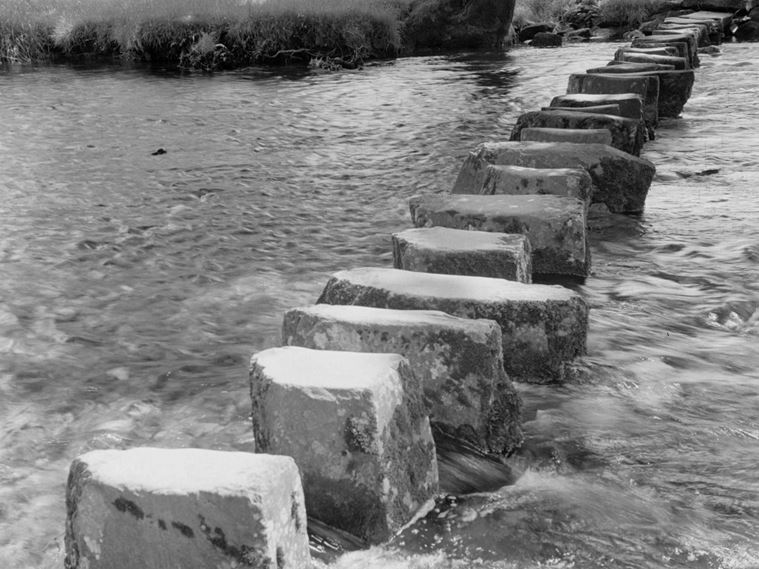Cumbria
Explore hidden histories, historic photos, and things you never knew about Cumbria from the collections and archives of Historic England.
Discover your local listed buildings and places
Introducing some of Cumbria's most historic sites, included in the National Heritage List for England. Some of these captions have been summarised by AI. Click through for the official List entry. Skip this section and go to place by numbers
The English Lake District
Above Derwent
The English Lake District is recognised as a landscape of extraordinary harmonious beauty and inspiration, its natural features enhanced with man-made activity - traditional hill farming,...
Coombe Gill Mill
Borrowdale
Water-powered cornmill, early C18 with possible earlier origins, and an attached corn drying kiln and store, probably C18. Read the official list entry to find out more.
Corby Castle
Wetheral
Corby Castle's pleasure grounds were developed between 1709-39 by Thomas Howard, featuring structures and grottos.
Long Meg and Her Daughters stone circle, associated cursu…
Hunsonby
Long Meg and Her Daughters is a large stone circle with prehistoric rock art and associated monuments, reflecting religious significance from Late Neolithic to Early Bronze Age.
RAF Spadeadam: Blue Streak Rocket
Kingwater
Blue Streak rocket, 1959 by de Havilland. Read the official list entry to find out more.
The Howk Bobbin Mill
Caldbeck
An L-shaped, two-storey mill house with associated buildings and features including a coppice barn, a drying kiln, a privy, offices/stable, retaining walls, tracks and part of the water...
Castlerigg stone circle and two bowl barrows
St. John's Castlerigg and Wythburn
Castlerigg is one of England's finest large irregular stone circles, reflecting prehistoric ritual significance, rare examples of social gatherings, and calendar function from Late Neolithic...
Mireside Farmhouse and bank barn
Crosthwaite and Lyth
Farmhouse, late C17 with C18 alterations, and bank barn of later C18 or early-C19 date. Read the official list entry to find out more.
Old Carlisle (Olerica) fort and civil settlement
Westward
Old Carlisle Roman fort reveals early urban development and Roman military strategy, highlighting its significance in the Romanisation of northern Britain.
Low Borrowbridge Roman fort
Grayrigg
The Low Borrowbridge Roman fort and settlement are well-preserved, offering insights into military and civilian life during Roman Britain, with significant archaeological deposits revealed...
Burrow Walls Roman fort
Seaton
The Burrow Walls Roman fort and medieval hall demonstrate Roman military strategy and medieval architecture, showcasing insights into Romano-British and medieval period fortifications.
Dallam Tower
Beetham
Dallam Tower, a Grade I listed building, features early 18th-century origins with landscaped gardens and a deer park, reflecting historical development since the medieval period.
Furness Abbey Savignac and Cistercian monasteries: precin…
Barrow
Furness Abbey, founded by Stephen in 1124, evolved from a Savignac to a wealthy Cistercian monastery by the 16th century, showcasing significant architectural and historical remains.
Collinfield Farmhouse and two bank barns
Cartmel Fell
Farmhouse, C17 with C18 addition and two bank barns of late C18 or early-C19 date. Read the official list entry to find out more.
Levens Hall
Levens
Levens Hall's park and gardens, designed by Guillaume Beaumont from 1689 to 1712, retain their original layout, showcasing historical and cultural significance over architectural details.
Abbey Vale
Westmorland and Furness
Porter's Lodge, now house, 1873. Read the official list entry to find out more.
Two rifle ranges on Silver How
Lakes
The remains of two mid-C19 military rifle ranges (300 yards and 800 yards) oriented north-west to south-east, situated above Grasmere on the lower slopes of Silver How adjacent to the public...
Birdoswald Roman fort and the section of Hadrian's Wall a…
Waterhead
Hadrian's Wall, marking a Roman Empire frontier, remains a World Heritage Site.
Sizergh Castle
Helsington
Sizergh Castle, a former pele tower dating back to the 14th century, features historical gardens developed by T Hayes & Son in 1926. Owned by the National Trust since 1950.
Christ Church
Maryport
Anglican church, 1872 to designs of Charles Eaglesfield. Early English style. Read the official list entry to find out more.
RAF Spadeadam: Greymare Hill Missile Test Area
Kingwater
Missile Test Area, 1958-9. Read the official list entry to find out more.
Brough Castle and Brough (Verteris) Roman fort and civil …
Brough
The upstanding and buried remains of Brough (Verteris) Roman fort and its associated civilian settlement, Brough medieval castle and a forework and a series of linear earthorks associated...
County Offices
Kendal
Council offices 1937-9 to the designs of Verner O. Rees for Westmorland County Council. Read the official list entry to find out more.
Workington Hall
Workington
Workington Hall is an ancestral home of the Curwen family, with a landscape park laid out by Thomas White in the 1780s, now managed by Allerdale Borough Council.
Roman milestone near Middleton vicarage
Middleton
The Roman milestone near Abba Farm is a well-preserved example, highlighting the historical importance of Roman roads in England, both militarily and economically.
Holker Hall
Lower Allithwaite
Holker Hall's gardens, influenced by Joseph Paxton and Thomas Mawson, feature mature trees, formal areas, and a kitchen garden, with a park supporting a fallow deer herd.
The Cockpit stone circle and seven adjacent clearance cai…
Barton and Pooley Bridge
The Cockpit is a significant prehistoric stone circle on Moor Divock, with adjacent clearance cairns, illustrating its historical and ritual importance in prehistoric Cumbria.
Lowther Castle
Askham
Lowther Castle, designed by Robert Smirke in the early 19th century, was the seat of the Lowther family since the 12th century, now maintained as a controlled ruin.
Beckside farmhouse and barns
Crook
Farmhouse, later C17 with mid-late C19 addition; bank barn and threshing barn, late C18 or early C19. Read the official list entry to find out more.
Brougham Roman fort (Brocavum) and civil settlement and B…
Brougham
The upstanding and buried remains of Brougham Roman fort (Brocavum) and its associated civil settlement and Brougham medieval castle. Read the official list entry to find out more.
Kendal Castle and associated earthworks, and earlier ring…
Kendal
Kendal Castle, a significant medieval fortification, developed from a late 12th-century ringwork. Linked to Katherine Parr and notable for its historical and educational value.
Former White Hart And Stable To The Rear, 34 Boroughgate
Appleby-in-Westmorland
Inn, mid-C18 with possible earlier origins and a mid-C18 stable/coach house; C19 and C20 additions and alterations. Read the official list entry to find out more.
Watercrook Roman fort and civil settlement
Natland
The Roman fort and civilian settlement near Watercrook Farm offers insights into Roman military occupation with its well-preserved archaeological remains, showcasing long-term habitation and...
Storrs Hall
Windermere
Simple classical villa, mid 1790s, for Sir John Legard, transformed c1808-9 by Joseph Gandy for John Bolton. The clerk of works was Francis Webster.
Rydal Mount
Lakes
Rydal Mount, designed by poet William Wordsworth, blends Picturesque ideals with historical continuity. Featuring terraced gardens and scenic views, it reflects 19th-century artistic tastes.
Ambleside Roman fort, associated vicus and Roman road
Lakes
Ambleside Roman fort and its vicus are significant for their rare insights into Roman military strategy.
Giant's Grave standing stones, Kirksanton
Whicham
Giant’s Grave standing stones in Cumbria are a well-preserved example of prehistoric rock art, distinguished by cup marks, and signify this area’s historical significance.
Rydal Hall
Lakes
Sir Daniel Fleming built a grotto in 1669 for viewing a waterfall, enhancing Rydal Hall's aesthetics. The Hall's gardens, designed by Thomas Mawson, date back to circa 1909.
Explore more
Search for more listed placesCumbria through time
This timeline shows the first period of use for buildings and places on the National Heritage List for England, just one of the details recorded for every list entry. Click around to see how Cumbria changes over time. Skip this section and go to aerial photos
Prehistoric Before AD 43
Prehistory covers a million years of human occupation before the Roman invasion and the introduction of writing. Primarily hunter-gatherers of several human species including Neanderthals, the peoples moved across Europe, hunting animals, exchanging ideas and developing complex culture and belief systems including burial rites and astronomical understanding, as at Stonehenge for example.
Roman AD 43 to AD 410
Britain was invaded by four legions of the Roman army in AD 43, who relatively rapidly conquered England from landing points in Kent. Parts of Wales and Scotland soon followed.
Roman culture brought urbanism, monumental buildings, wide-ranging religious beliefs, writing, and strong social hierarchy. The Roman administrative system was withdrawn in AD 410.
Early medieval AD 410 to AD 1066
This period, often associated in England with Anglo-Saxons and Vikings, saw a reduction in urban living from the Roman period and increased migration from northern Europe.
Traces of this period can be found in cemeteries, particularly in artefacts and in some of the very early churches, as this period also saw the growth of Christianity in Britain.
Medieval AD 1066 to AD 1540
This period, sometimes known as the Middle Ages, began with the Norman invasion in AD 1066. It saw a significant rise in military and defensive buildings such as castles and earthworks, as well as religious houses dominating a largely agricultural landscape.
The monarchy and Church dominated the period, which also saw the break with the Roman Catholic Church and the English reformation.
Post medieval AD 1540 to AD 1901
The Post-Medieval period brought seismic changes to life in England, with religious reformation leading to the democratization of worship and the destruction of hundreds of religious houses.
In parallel, there was a huge expansion of scientific study and enlightenment that permanently altered the nation's social structure and landscape. Industrialization and mass production lead to wider global trade, emigration, and immigration.
20th century AD 1901 to AD 2000
The 20th century saw an incredible expansion of England's transport networks, with suburban growth shadowing rapid infrastructural expansion. The establishment of state schools, hospitals, and modern technical colleges, with new architectural styles, radically changed the appearance of towns and cities.
Two catastrophic world wars and the 1918 pandemic also brought unprecedented change, altering England's built environment and social structures forever.
Prehistoric Before AD 43
Prehistory covers a million years of human occupation before the Roman invasion and the introduction of writing. Primarily hunter-gatherers of several human species including Neanderthals, the peoples moved across Europe, hunting animals, exchanging ideas and developing complex culture and belief systems including burial rites and astronomical understanding, as at Stonehenge for example.
Roman AD 43 to AD 410
Britain was invaded by four legions of the Roman army in AD 43, who relatively rapidly conquered England from landing points in Kent. Parts of Wales and Scotland soon followed.
Roman culture brought urbanism, monumental buildings, wide-ranging religious beliefs, writing, and strong social hierarchy. The Roman administrative system was withdrawn in AD 410.
Early medieval AD 410 to AD 1066
This period, often associated in England with Anglo-Saxons and Vikings, saw a reduction in urban living from the Roman period and increased migration from northern Europe.
Traces of this period can be found in cemeteries, particularly in artefacts and in some of the very early churches, as this period also saw the growth of Christianity in Britain.
Medieval AD 1066 to AD 1540
This period, sometimes known as the Middle Ages, began with the Norman invasion in AD 1066. It saw a significant rise in military and defensive buildings such as castles and earthworks, as well as religious houses dominating a largely agricultural landscape.
The monarchy and Church dominated the period, which also saw the break with the Roman Catholic Church and the English reformation.
Post medieval AD 1540 to AD 1901
The Post-Medieval period brought seismic changes to life in England, with religious reformation leading to the democratization of worship and the destruction of hundreds of religious houses.
In parallel, there was a huge expansion of scientific study and enlightenment that permanently altered the nation's social structure and landscape. Industrialization and mass production lead to wider global trade, emigration, and immigration.
20th century AD 1901 to AD 2000
The 20th century saw an incredible expansion of England's transport networks, with suburban growth shadowing rapid infrastructural expansion. The establishment of state schools, hospitals, and modern technical colleges, with new architectural styles, radically changed the appearance of towns and cities.
Two catastrophic world wars and the 1918 pandemic also brought unprecedented change, altering England's built environment and social structures forever.
Aerial photos of Cumbria
Aerial photography helps reveal secrets of England's changing landscapes that are impossible to see from the ground. Skip this section and go to archive images
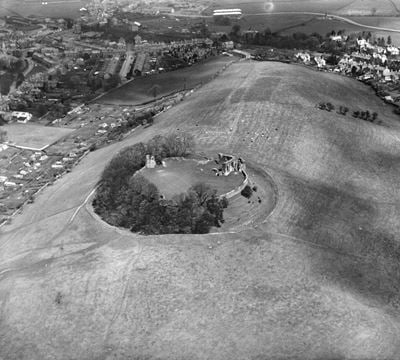
Kendal
Kendal Castle, Kendal, 1929
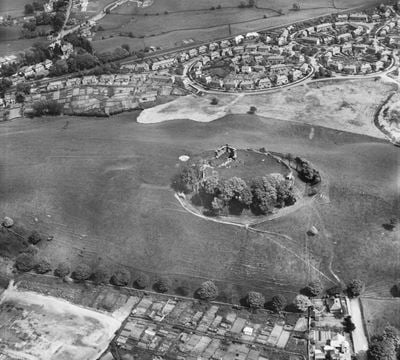
Kendal
Kendal Castle, Kendal, 1952
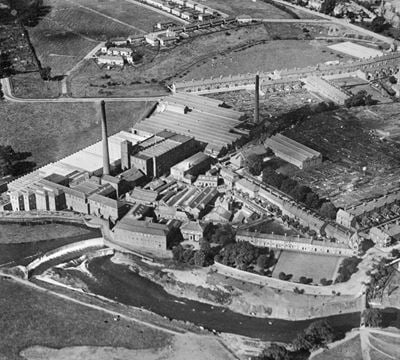
Denton Holme
Holme Head Works, Denton Holme, 1925
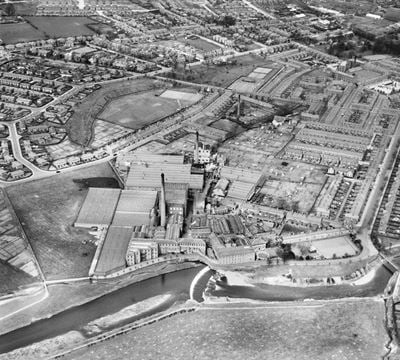
Denton Holme
Holme Head Works and environs, Denton Holme, 1948
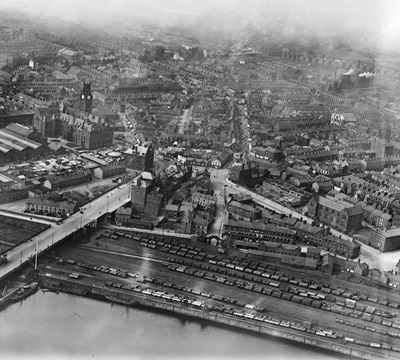
Barrow-In-Furness
Schneider Square, Barrow-in-Furness, 1920

Barrow-In-Furness
The town centre, Barrow-In-Furness, 1925

Warcop
Eden Gate, Warcop, 1951

Warcop
Eden Gate, Warcop, 1951
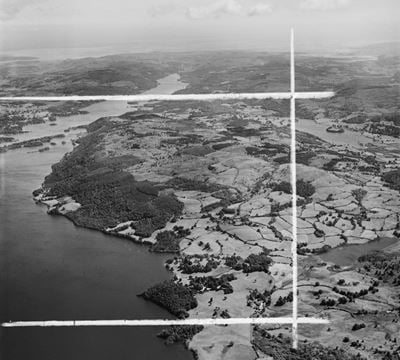
High Wray
Countryside between Windermere and Esthwaite Water, High Wray, 1952
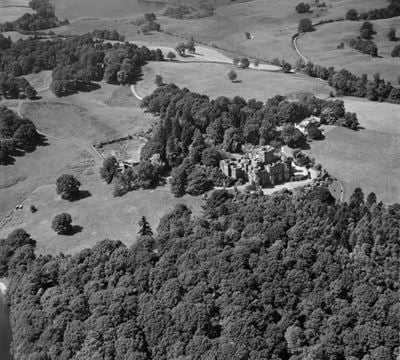
Low Wray
Wray Castle alongside Windermere, Low Wray, 1953
Cumbria in the Historic England Archive
The Historic England Archive cares for over 15 million images, dating from the 1850s to the present day. Discover stunning images of Cumbria's past. Skip this section and go to stories about heritage
Charles George Harper Collection
Copeland, Cumbria
Date created: 1892 - 1933
Muncaster Castle, seen from the south-west
Eileen ‘Dusty’ Deste Collection
Abbot Hall Park, South Lakeland, Cumbria
Date created: 1965 - 1968
The stable block and carriage entrance (now the Museum of Lakeland Life and Industry) viewed from Abbot Hall
Eric de Mare
Ambleside, South Lakeland, Cumbria
Date created: 1945 - 1980
General view of stepping stones in Ambleside.
John Gay Collection: Rural Life
Cumbria
Date created: 22 DEC 1953 - 07 JAN 1954
A farmyard scene showing a hen and rooster feeding on the lawn in front of a farmhouse and farmyard in the Cumbrian fells.
John Gay Collection: Miscellaneous
Cumbria
Date created: 01 JAN 1958 - 31 DEC 1958
A close-up shot of sunlight streaming through raindrops clinging to the fronds of a fern-like plant, with woodland in the background
John Gay Collection: Counties
Borrowdale, Cumbria
Date created: 1958
View of a shallow stream flowing over rocks at an unidentified location in Borrowdale, Cumbria, looking upstream and on towards misty fells in the...
John Laing Collection
Copeland, Cumbria
Date created: 13 Mar 1951
A view along the exterior of the classroom wing at Seascale School
London, Midland and Scottish Railway Company
Barrow-In-Furness, Cumbria
Date created: 20 Sep 1892
The interior of the roofless Chapter House at Furness Abbey
Alfred Newton and Sons
Cumbria
Date created: 1896 - 1920
GENERAL VIEW SHOWING MOUNTAINSIDE AND VALLEY
Nigel Temple Collection of Postcards of Parks and Gardens
Cumbria
Date created: 1920 - 1940
EXTERIOR VIEW OF UNIDENTIFIED LAKELAND FARM / TEA ROOMS
John Laing Collection
Lowgill, South Lakeland, Cumbria
Date created: 28 Mar 1968
A lorry collecting concrete at a batching plant during the construction of the M6 through the Lune Gorge
Stories about heritage in your local area
Historic England publishes news, blogs, research, videos, and podcasts celebrating England's rich heritage. Discover the stories we have about Cumbria. Skip this section and go to education
Fantastical 16th-century Wall Paintings Revealed in Cumbrian Tudor Hunting Lodge
Mentions The Ashes, Agricultural ranges, boundary walls and cobbled yard at The Ashes, Cumbria
The rare and unusual Grotesque style paintings feature fantastical beasts and foliage arranged in decorative panels.
What Happened After the End of Roman Rule in Britain?
Mentions Birdoswald Roman fort and the section of Hadrian's Wall and vallum between the River Irthing and the field boundaries east of milecastle 50
After the fall of the Roman Empire in Britain around AD 410, many towns declined, industries ceased, and the Roman army left England's shores.
The Legend of King Arthur
Mentions Castlesteads Roman fort and the vallum between the track to the east of Castlesteads fort and the Cam Beck in the west
King Arthur was central to the legendary tales of medieval romance. Discover the places connected to Camelot, Tintagel, and the Battle of Badon Hill.
The History of England’s Village Greens
Mentions Pump Near East End
The origins of village greens in England date back to the early Middle Ages. Village greens are open spaces that can be registered.
16 Historic Gardens and Landscapes to Visit
Mentions Levens Hall
Try these English gardens if you’re looking for somewhere with spectacular garden scenery.
16 Stories of African Lives in Northern England
Mentions Burgh by Sands Roman fort, Beaumont camp, Burgh Castle and Hadrian's Wall from boundary west of churchyard, Beaumont to Burgh Head in wall miles 70 and 71, Church of St Michael, Citadel Station
Discover the often untold stories of brilliant and resilient people of African heritage.
Narrative Structures: England’s Literary History in 11 Places
Mentions Dove Cottage at Town End
Discover the historic sites in England where famous writers found their inspiration.
5 Facts About the Vikings in England
Mentions The Giant's Grave - Two Anglian cross-shafts and four hogback stones in St Andrew's churchyard, Penrith, High cross in St Mary's churchyard
A quick introduction to the Viking Age in England.
Traces of the Vikings in England
Mentions High cross in St Mary's churchyard
Explore the archaeological traces and standing remains that tell us about Viking life and and culture in England.
Women Architects Who Helped Shape England
Mentions Church of St Michael, Church of St Mary, Brackenfell
Women have always influenced domestic design but it wasn’t until 1898 that the first female architect was admitted to the Royal Institute of British...
8 of England’s Most Beautiful Cathedrals to Visit
Mentions Cathedral Church of the Holy and Undivided Trinity
From Norman to Modernist, there are many different architectural styles on show in England’s cathedrals.
From Clog Dancing to Women’s Football: 6 Stories from Historic Lancashire
Mentions Guides Farmhouse and Attached Farm Buildings
Discover six stories about the historic county of Lancashire in North West England.
An Introduction to Quaker Meeting Houses
Mentions The Friends Meeting House and Adjoining Cottage to West, Mosedale Quaker Meeting House and adjoining stables, Quaker Meeting House Alston
The earliest Quaker meeting houses were distinctive for their simple, functional design; built by local craftsmen, they sit modestly in the landscape.
Fantastical 16th-century Wall Paintings Revealed in Cumbrian Tudor Hunting Lodge
Mentions The Ashes, Agricultural ranges, boundary walls and cobbled yard at The Ashes, Cumbria
The rare and unusual Grotesque style paintings feature fantastical beasts and foliage arranged in decorative panels.
Research Reports Roundup February 2025
Mentions Cumbria
A roundup of the latest additions to our research reports database from October 2024 to February 2025, arranged by theme.
Archaeological Sensitivity Mapping
Mentions Cumbria
Developing a methodology for understanding where future significant archaeological discoveries may be made.
Managing Lithic Sites
Mentions Cumbria
New advice addresses research and management issues for sites where prehistoric stone tools contain unique evidence.
The Military Town and Bathhouse of Birdoswald Fort on Hadrian’s Wall
Mentions Birdoswald Roman fort and the section of Hadrian's Wall and vallum between the River Irthing and the field boundaries east of milecastle 50, Cumbria
Recent excavation has provided important new understanding of the extramural settlement outside the fort.
Kirkham: Forging a Heritage Programme as a Bridge to Wellbeing
Mentions Cumbria
Supporting wellbeing and cohesion in a Lancashire community through a social prescribing programme based on interacting with heritage.
Outreach to Ownership: a Community-focused Research Pilot
Mentions Cumbria
Public heritage bodies in England and Scotland working in partnership to empower community-led research in the cultural sector.
30 Years of Flying in the North
Mentions Cumbria
Celebrating the achievements of Historic England's aerial recording programme in the North of England.
Shipwreck Linked To Wordsworth Family Granted Protection
Mentions Cumbria
The wreck of the Earl of Abergavenny has been scheduled by DCMS on the advice of Historic England.
Historic Watercourses and Climate Change: Mapping the History of Rivers and Floodplains
Mentions Cumbria
How a GIS tool can be used to gather information to manage historic watercourses and increase their resilience to climate change.
Research Reports Roundup to February 2024
Mentions Cumbria
A roundup of new additions to the Historic England Research Reports database and a longer term overview of industrial heritage reports.
Quaker Meeting Houses Assessed
Mentions Cumbria
The deliberate simplicity of the Quaker place of worship.
Cumbria's social history through photos
Over 10,000 images from the Historic England Archive have been specially selected and re-captioned for teachers, students, and anyone who wants to learn more about their local area. Skip this section and go to grant-aided places
Yanwath Hall Cumbria
Period: Medieval (Middle Ages) (1066 - 1484)
This hall house has one big room with a parlour at one end which was used by the lord and his family.The large windows that let light into the parlour...
Workmen from John Laing plc sitting on a stone wall in Eden, Cumbria
Period: 1960s (1960 - 1969)
These workmen were building part of the M6 Motorway between Killington and Tebay, in Cumbria.
Workmen from John Laing plc sitting on a stone wall in Eden, Cumbria
Workington Dock, Workington, Cumbria
Period: Victorian (1837 - 1901)
A view of Florence a steamer from Maryport moored at the quay at low tide.
Workington Brewery, Ladies Walk, Workington, Cumbria
Period: Victorian (1837 - 1901)
The Workington Brewery company was founded by John Curwen in 1792.
Workington Brewery, Ladies Walk, Workington, Cumbria
Workington Brewery, Ladies Walk, Workington
Period: Victorian (1837 - 1901)
The brewery tower and maltings date from the mid 19th century. The brewery building is an important landscape feature on a hill overlooking the river.
Workington Brewery, Ladies Walk, Workington
Workers' Institute, Holme Head Works, Carlisle, Cumbria
Period: Victorian (1837 - 1901)
The reading room and coffee tavern built in 1881 by George Dale Oliver at the corner of North Street and Bridge Terrace for the workers at the Holme...
Workers' Institute, Holme Head Works, Carlisle, Cumbria
Whitehaven Castle, Flatt Walks, Whitehaven
Period: Georgian (1714 - 1836)
Whitehaven Castle was built in 1769 by Sir John Lowther as his own house, on the site of an earlier mansion.
Whitehaven Castle, Flatt Walks, Whitehaven
Wetheral Priory Gatehouse, Wetheral, Cumbria
Period: Medieval (Middle Ages) (1066 - 1484)
Wetheral Priory was a Benedictine monastery founded in c1106-12. The gatehouse was built in the 14th century.
Wetheral Priory Gatehouse, Wetheral, Cumbria
Visit grant-aided places near you
These places and buildings have been helped by Historic England's financial grants. Find historic places in your neighbourhood that you never knew existed! Please note that opening times may vary. Skip this section and go to related locations
Lowther Castle, Penrith
Lowther Castle, constructed between 1806-1814 by Sir Robert Smirke for the 1st Earl of Lonsdale.
Warwick Bridge Cornmill, Warwick Bridge
A Grade II* listed corn mill and drying kiln have been fully restored to operational status.
Duddon Iron Furnace, Millom Without
Constructed in 1736, this charcoal-fired iron furnace is the oldest of its kind in northern England.
Discover more
Ready for more local heritage? Take a look at these other places nearby
